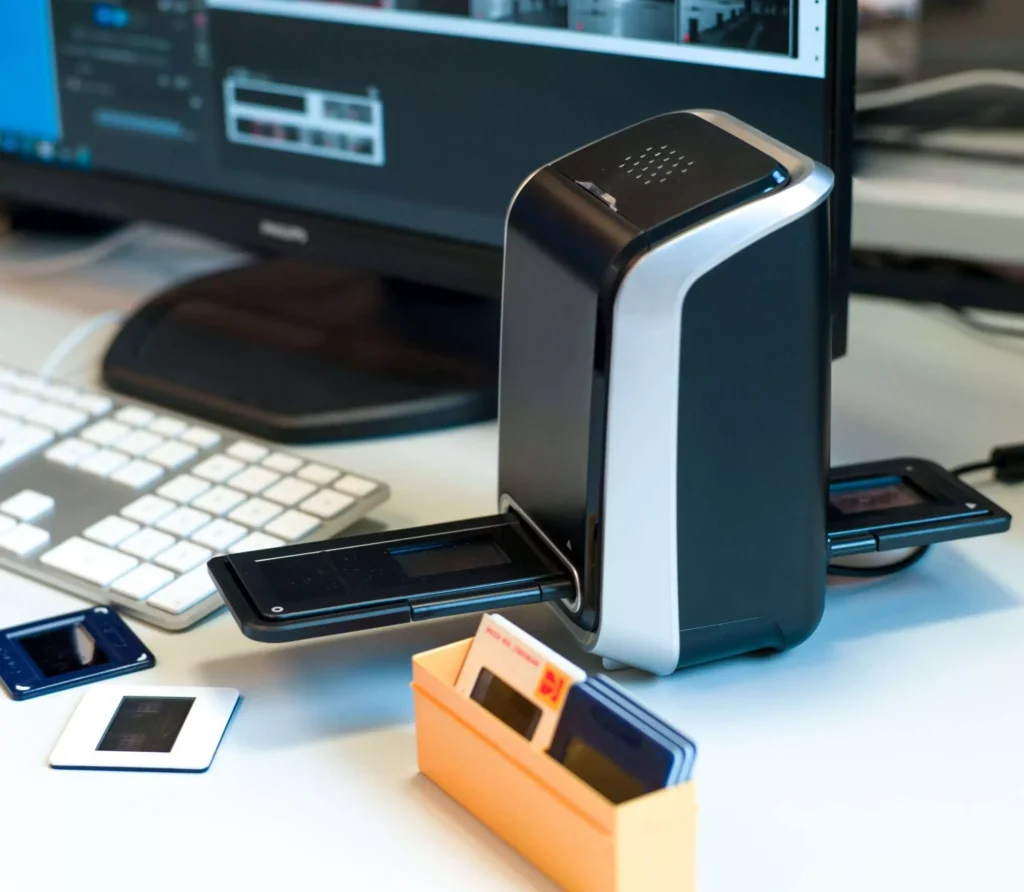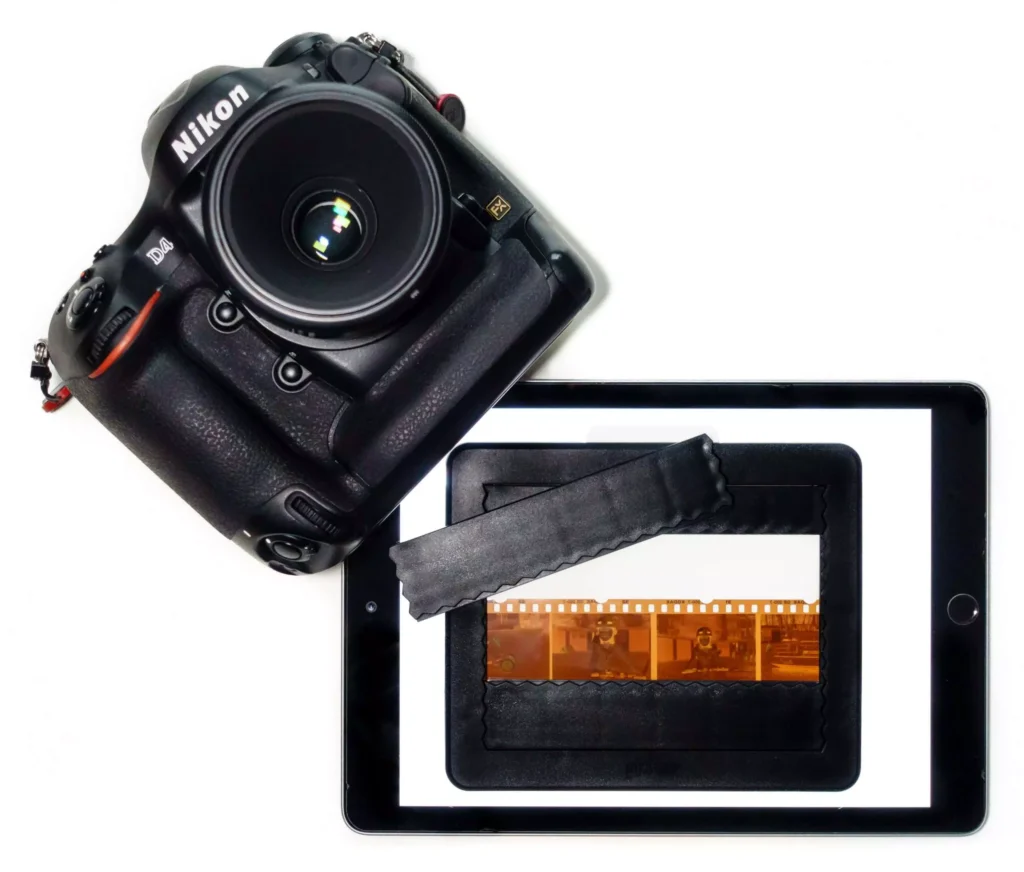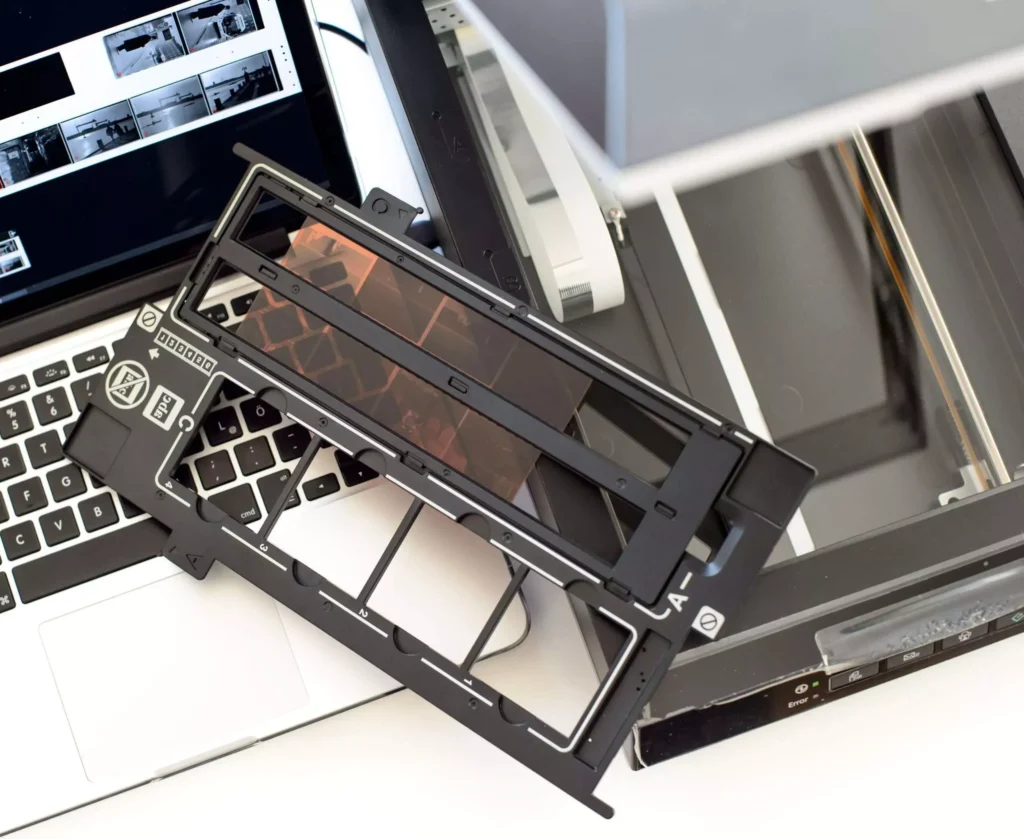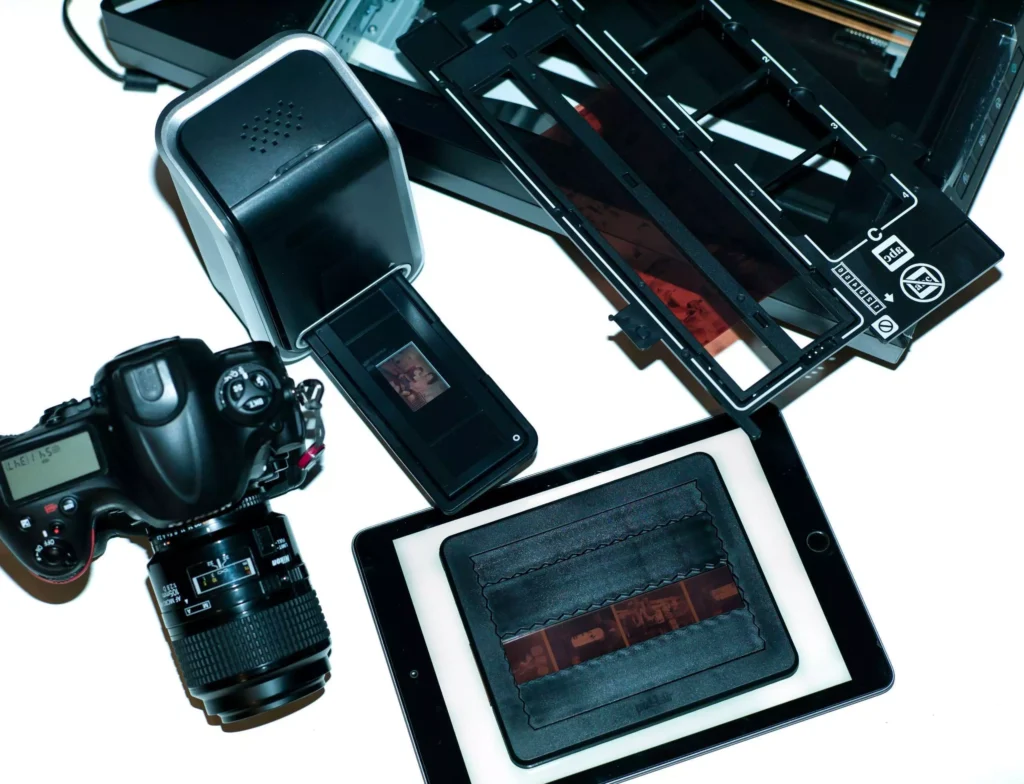3 different Approaches
There are several ways to digitize analog images. For some years now, there have been cheap “Digitizers”, known as CMOS scanners, that try to compete with CCD film and photo scanners. A third option is taking photos with a digital SLR camera, also known as re-photography or duplication. It’s important to weigh the advantages and disadvantages of these three possibilities before making your final decision. Here is a brief overview:
Scanning with CMOS Scanners
CMOS scanners are typically small devices that can be purchased for under 100 Euro. You can find these devices at any large online retailer, electronics store or even at your average discount store around the corner. The user places a slide or film strip in a holder and pushes it into the device. There isn’t much to configure, allowing you to directly begin with image digitization. A cheaper camera sensor then “somehow” photographs the image in an even lower resolution.
The images are subsequently transferred to your PC via USB or memory card. Results vary depending on device and image. However, these results cannot be compared to those of a proper film scanner with CCD. With a CMOS scanner, there aren’t many opportunities to edit your image during digitization and once digitization is over the image quality for post-processing editing is insufficient.
These CMOS devices are cheap and at first glance their ease of use may appear attractive. However, customers are often disappointed with their quality and decide to digitize a second time with a real scanner in order to obtain satisfactory quality.



